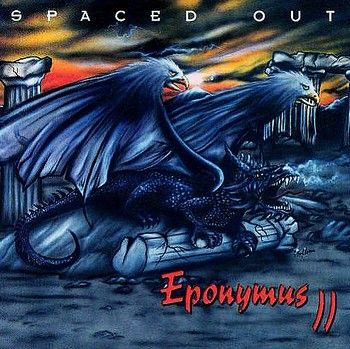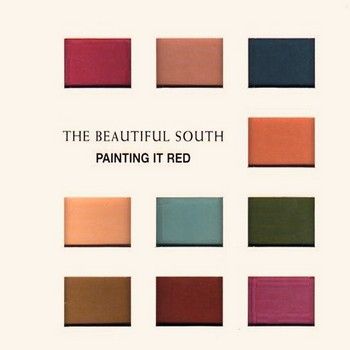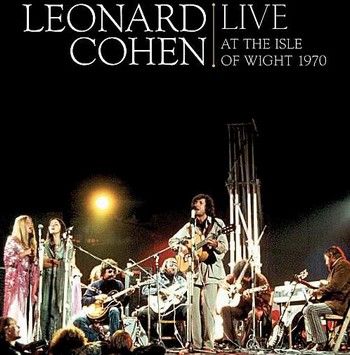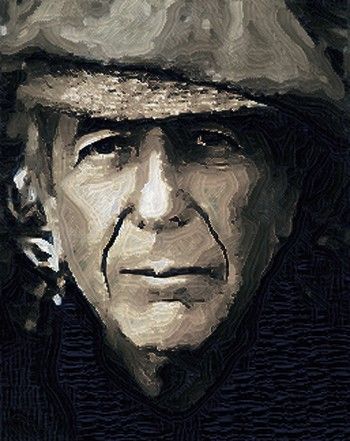
Spaced Out - Eponymus II - 2001 - Unicorn Records
The follow-up to 2000's self-titled release, this one shows the group staying true to the sound of that album while still making progress toward expanding their sound. The disc wanders a bit more into the world of progressive rock while still maintaining their fusion sort of sound. In fact, this one at times really leans a bit toward the Red era of King Crimson. Granted, that refers to fairly brief and sporadic segments of the album, but the sound is there. Along with that sound is a continuation of the fusion-oriented modes begun on the first album, and even some traditional jazz sounds. As many of the fusion sort of groups are wont to do, this disc can get a bit noodly and wander a bit. Still, if you are into the instrumental prog stylings that lean toward fusion, perhaps this is an album for you. In saying that this album is instrumental, that even is not completely accurate. That is how difficult this band is to pigeonhole. In fact, the early portions of the album feature some spoken-word vocals that are stopped by a firm, "Stop talking!," and a bit of the later section features a non-lyrical chorale sort of vocal arrangement. Still, the disc overall is composed of non-vocal arrangements. It gets quite adventurous at times, and is not for those who are faint at heart in terms of experimentation, but it really shows a group of musicians who are on top of their game. © Gary Hill © 2011 Rovi Corporation. All Rights Reserved. http://www.allmusic.com/album/eponymous-ii-r542414/review
Here it is, the second album by Spaced Out. Another great effort by this excellent Canadian band that will please fans of complex music and excellent craftsmanship. Those of you who remember last years self-titled debut album will be very pleased by this successor. All the familiar ingredients are back, but this time the band has taken their compositions to a different level. The band is still fairly young, founded in 1998 in Montreal. The line-up is unchanged so if any musician on the debut album appealed to you there'll be more on this here disk for you too! Those of you new to the band: beware... This music is by no means easy listening! The rhythm changes are countless, and the music largely leans on odd-beat riffs and complex melodies your ears and mind will have to get used to. And an open mind is certainly needed in order to sit through this record. Credited as full members on this one are Eric St-Jean (Keyboard), Antoine Fafard (Bass), Louis Cote (Electric Guitar) and Martin Maheux on drums. Mathieu Bouchard, credited as a full band member on the debut is still around as an additional musician on several tracks. Other musicians include Michel Deslauriers, Jason Martin, Jean-Pierre Dodel and Ronald Stewart. The songs were written by Mr. Fafard, who co-wrote "Infinite Ammo" together with Martin Maheux. Also the record was produced by Mr. Fafard. Very talented guy! There is so much room for all musicians to play their best, it's unbelievable. My personal pleasure in listening to this band is the rhythm section. There is so much going on in there; you can listen to it over and over and keep discovering new aspects of their amazing playing. Tasteful addition of narration, vocals and a tenor saxophone on "Jamosphere" make for some interesting diversions from the overall sound. Spaced Out have pleasantly surprised me by creating yet another masterpiece in contemporary music. I am not going to shove Spaced Out in any genre. Spaced Out *is* a genre. © Eef Vink © RockNet.nl http://www.spacedoutmusic.com/Reviews/rocknet2.htm
PROLOGUE: Time goes by like lightning, that's true, but this group's story is another thing altogether. Just eight months have passed by since the Spaced Out debut album was released (in September 2000), yet another new album by this excellent Canadian band is already out. Actually, Spaced Out would have released their second studio album two month ago except for a delay on the part of a factory that was pressing their CD. Now, with two wonderful 55-minute albums offered up to the Progressive world in just eight months, Spaced Out is, probably, the only time-breaking record-holder (the word "record" has two meanings here) in the contemporary Progressive Rock movement. In this connection, I've immediately recalled the old and good (old'n'gold) years of the first half of the 1970s when lots of the bands, being deeply inspired by that wonderful first wave of the Progressive Music movement, easily had time to release two (sometimes even three) albums a year . By the way, the first edition of the Spaced Out self-titled debut album has been sold out for some time; the second edition of this CD was made available for sale by Unicorn Records since the beginning of the summer. Congratulations go to both the band and the people at the label whose CD-catalogue so far consists only of excellent works and masterpieces. THE ALBUM: Firstly, I'd like to let you know that the band's second album is more progressive than its predecessor, so "Eponymus II", without a doubt, should attract a lot of potentially new Spaced Out fans from the Classic Progressive camp. Secondly, all the old and new fans of the band will be more than amazed with the mind-blowing, fantastic musicianship of all the band members (and guests, too), as well as with their joint performance on the band's second album. Thirdly, it's great that the keyboard player is featured on more tracks of "Eponymus II" (only two compositions on the debut album featured keyboards). The first three compositions are the real progressive killers, having less jazzy elements than in any other remaining pieces on "Eponymus II". What's more, Infinity Ammo, The Lost Train, and especially Sever the Seven are filled with all those things that are essential in creating a truly progressive work. Each of these three pieces amaze with extremely frequent and very unexpected changes of the musical directions, a lot of diverse and complex arrangements, and totally unpredictable developmental compositional techniques . Also, these pieces project tense and dramatic feels. I didn't expect to hear such specific emotions in the music of Spaced Out. Wonderful is the word. Well, it's time to move farther. The same essential attributes of progressive music (in its general meaning this time, - not in the 'classic' one), that I mention above, are typical for the majority of compositions of this album. Apart from the three already described (classic progressive) pieces, the remaining tracks consist of: Trophallaxie, Sever the Seven (Revisited) and both the "spherical" ones (the last two tracks) - Glassosphere (Part II) and Jamosphere. Only these two "Spheres" contain classic progressive arrangements and they're adeptly intermixed with jazzy bass and guitar solos / improvisations. The fifth and the sixth compositions are also full of such specifically progressive ingredients as unusual time signatures and rises and falls of different themes and arrangements, though these two pieces represent the fusion of Jazz Rock and Spacey Progressive structures. As always on this album, all these musical changes and events happen on a very "slippery" musical base (I just cannot call it "background") that consists of complex, illogical, often atonal and, at the same time, very tense acrobatics of Antoine Fafard's bass guitar. Each of the musicians demonstrate brilliant musicianship throughout the album. Quirky, intricate guitar solos by Louis Cote are as impressive as is the uniquely diverse drumming by Martin Maxeux. The bass lines, moves and solos by Antoine Fafard, however, are the most special elements on the album. The bass guitar plays not just a prominent role on "Eponymus II"; it is the leading instrument on the CD and it is wonderful to hear how masterly other musicians tat their laces-movements around the constantly changing fantastic bass traceries - the real acrobatic tricks of the bass. By the way (fortunately!), Eric St-Jean is the only musician here whose parts on "Eponymus II" are almost always played in the treble sonata clef (it seems to me that most of them were specially written out by Antoine). That's why this album as a whole sounds more progressive than the band's self-titled debut. And this is true despite the fact that the other four compositions of this album have little to do with Progressive as we see it. (I have discussed two of these pieces earlier in this review.) The two remaining tracks are not part of the the aforesaid majority (can you still remember it?) and each of them sound quite independent from the rest of the tracks on the "Eponymus II", and, in addition, sound quite different from each other. While For the Trees Too almost entirely consists of jazzy improvisations and improvisation-like solos of bass and guitar, the largest part of The Alarm is filled with the diverse interplays between the various percussive instruments and the real drum kit. Finally, using the voices in spacey (exactly) episodes sounds innovative and effective. As for a couple sax jazzy solos on the last track, they sound good, though I am not sure that adding them just (and only) at the end of the album was necessary. SUMMARY: After the first listening to the Spaced Out second album, it's already become clear that the band has grown heavily since their debut album - both compositionally and technically, though their debut album was really an excellent debut in the Progressive taking into account the fact that Spaced Out was formed just a couple years ago and has no history nor even biography that could be related to some pre-Spaced Out formations or bands, the reviews for which the hero of this review has completed. In other words, the band's maturity developed extremely quickly as evidenced by the absolute masterpiece the second Spaced Out album has turned out to be and which, moreover, has been created during such a short space of time (at least relative to the last decade). Also, with the "Eponymus II" album, Spaced Out has just confirmed that they are currently not only a hallmark of one of the chief Progressive Rock genres, but also, most likely, a leading contemporary Jazz-Fusion band within the frame of the progressive sense of said terminology (according to the real meaning of the word Fusion: Confluence). In respect to this meaning, Spaced Out's "Eponymus II" album can be described as the Confluence of Jazz-Rock and Classic Symphonic Progressive. © VM. July 29, 2001 © http://www.progressor.net/review/spaced_out_2001.html
Spaced Out is a quartet that hails from Montreal, Canada. This is Spaced Out’s 2nd effort. The music comes right at you full throttle. The music is described as jazz-rock progressive and all instrumental. The bands members include Antoine Fafard bass player and composer, Martin Maheux on drums, Louis Cote on electric guitars and Eric St-Jean on keyboards. It was recorded at Illusion III, L’Astronef & Cyberlogy “ Intensite” studio and mixed by Antoine Fafard. The bombastic playing style of Antoine Fafard drives the music. Antoine Fafard delivers some of the most intensive bass picking that we have ever heard on bass. Antoine Fafard never overplays or overshadows the music by himself. The rest of the band complements the music with great guitar riffs and superb drumming and to smooth it all out the keyboards delivers cascading progressive passages. The group never trips over themselves. The compositions are very structured and out of this the players are free to express their style through improvised solo sections, which leaves the music with a jazzy, feel. Spaced Out delivers 9 quintessential tracks that will quench your hunger for an acquisition. Track#2; The Lost Train, was our favorite track- remarkably even the song title actually goes with the music. You will see what we mean when you hear the music. Go check it out. If Spaced Out is any indication that the marriage with Jazz and Progressive music is merging more and more then this is a perfect example of it. We highly recommend this CD, especially for fans that love bass players. Prog4you rates this album 9 out of 10 keyboards- Great stuff people!
Reviewer & © George Roldan Review Date: 08/03/01 © Prog4you.com http://www.prog4you.com/cd-reviews--/spaced_out_eponymos_ii_.htm
SPACED OUT: Eponymus ll 2001 (CD. 53:25): Llnicom UNCR-5003 Style: Zeuhl fusion. Sound: *** Composition **** Musicianship *** Performance **** Total rating: 14. You’ve never heard anything quite like Spaced Out, a French Canadian quartet. Their version of Zeuhl fusion suggests a strange hybrid of Weidorje or Jean-Paul Prat, sans horns, and Return to Forever, with occasional Emersonian keyboards, and then some. There is even a bit of minimalism in the appropriately titled "Glassosphere — Part ll.", suggesting an outtake from Akhnaten with Philip Glass-style repetitive arpeggios. Antoine Fafard uses Jannick Tops style as a springboard for his bass stylings, with savage power and that famous buzzing sound. Other influences include Jaco Pastorius and especially Stanley Clarke. Guitarist Louis Cote is a mighty impressive virtuoso at times reminiscent of the late Tiemko's Remy Chauvidan. However, this writer found his extreme treble tone, like the brilliant high end of a wah wah pedal, used to excess. Still, Cote‘s technical and musical chops are dazzling. Eric St. Jean's juxtaposes weird Magmoid harmonies with occasional Keith Emerson style (faux) Hammond organ, replete with angular melodies and stabbing, staccato chords. Martin Maheux’s brilliant fusion style drumming can be compared to Paga‘s Claude Salmieri. This is one hot band. © Dean Suzuki
Call it New Age, jazz rock, or progressive jazz fusion, this album has a lot to offer. There are complex rhythm patterns, eclectic melodies and innovative and exploratory arrangements throughout the album, and musicianship is outstanding. Some of the band's influences include Igor Stravinksy, John Mclaughlin, Trevor Rabin, Keith Emerson, and Frank Zappa. N.B: [All tracks @ 320 Kbps: File size = 124 Mb]. Listen to the band's "Slow Gin" and "Evolution" albums
TRACKS
1 Sever the Seven 8:56
2 The Lost Train 6:20
3 Infinite Ammo 4:17
4 For The Trees Too 4:55
5 Trophallaxie 5:57
6 Sever The Seven - Revisited 5:33
7 The Alarm 3:58
8 Glassosphere, Pt. 2 5:31
9 Jamosphere 7:50
All music composed by Antoine Fafard except "Infinite Ammo" by Antoine Fafard & Martin Maheux
MUSICIANS
Louis Côté - Electric Guitar
Mathieu Bouchard - Electric Guitar on Tracks 6, 7 & 9 [Guest]
Jean-Pierre Dodel - Electric Guitar on Track 9 [Guest]
Michel Deslauriers - Acoustic Guitar on Tracks 1 & 8: Voice on Tracks 6 & 8 [Guest]
Antoine Fafard - Electric Bass
Éric St-Jean - Keyboards
Martin Maheux - Drums
Ronald Stewart - Tenor Sax on Track 9 [Guest]
Jason Martin - Voice/Narration on Tracks 1 & 5 [Guest]
SHORT BIO
A product of Montreal, Spaced Out began in 1998, formed by Antoine Fafard. He recruited Martin Maheux, Mathieu Bouchard, and Eric St-Jean to complete the lineup. The group began producing their brand of jazz-oriented progressive rock, borrowing from people across the musical landscape. In fact, they list influences as diverse as Igor Stravinksy, John Mclaughlin, Trevor Rabin, Keith Emerson, and Frank Zappa. In the year 2000, Unicorn Records released the band's self-titled debut. After that album was released, however, Bouchard quit the group and was replaced by Louis Cote. Eponymus II, the follow-up release, came out in 2001. © Gary Hill © 2011 Rovi Corporation. All Rights Reserved http://www.allmusic.com/artist/spaced-out-p484021/
MORE
Spaced Out is the brainchild of bassist & composer Antoine Fafard. He formed the band in 1998 by recruiting Martin Maheux on drums, Mathieu Bouchard on guitar, and Eric St-Jean on the keyboards. From here onwards, the group began producing their brand of jazzoriented progressive rock, whilst being inspired by a variety of musical styles along the way. In the year 2000, Unicorn Records released the band's self-titled debut 'Spaced Out'. Following this album, Bouchard left the group and was replaced by Louis Côté. In 2001, the album 'Eponymus II' was released bringing with it a more progressive sound compared to the previous CD; allowing room for musical experiments and exploration. In June 2002 Spaced Out participated at the prestigious North East Art Rock Festival(NEARfest) in Trenton NJ performing to an audience of 1850 people. The band's performance was received with great enthusiasm, raising Spaced Out's popularity to another level. The 'Slow Gin' album was released in March 2003 and was the result of a more progressive direction. In late 2005, the 'Spaced Out - Live in 2000' DVD presented one of Spaced Out’s first concerts. The following album entitled 'Unstable Matter' was released in July 2006. That record pushed Spaced Out’s music even further through its musical compositions, musicianship & production quality. After a performance at the Crescendo Festival in France in August 2006, the band released a CD and DVD of the concert and started to compose music for the next album entitled 'Evolution' which will be launched at the FMPM on the 13th of September 2008. Spaced Out offers a style of music where aspects such as rhythm, harmony and melody have been carefully thought out and composed with the goal of bringing this style to life. Through the well structured forms, the players are free to express their personality with improvised solos. In their repertoire, polyrhythmic patterns combined with modal colors form a unique music which is instantly recognisable. Influences from musicians and composers from the jazz, rock, metal & contemporary music world have played a big part in the music created and produced by S O. The level of intensity produced by this instrumental music band is to such a high degree, that the listener is undoubtedly left spellbound. © http://www.spacedoutmusic.com/Bio.htm
AND MORE !
Spaced Out... Two words that can mean different things to different people. But to a certain Antoine Fafard, the meaning lies somewhere, in musical form, in the depths of his twisted mind. Self proclaimed "Prince of Ambiguity" (that's how he introduces himself in concert!), Antoine only recently introduced the world to his own brand of "everything-but-the-kitchen-sink" type of music. But by ignoring pop music clichés, music industry standards and pretty much everything else in the music business, he's gone ahead and created something he can call his own. Complex rhythm patterns, eclectic melodies and innovative arrangements have molded his musical vision into what are the two albums that have seen the light of day so far. But he is not alone in the entity that is Spaced Out, and their story can be traced back to a place far, far away (Montreal!!), a long, long time ago (1994!!) to a band called Cortex. Antoine, still in his teens, was studying and playing bass guitar when he and his older brother Olivier, a drummer, put a band together with school mate Mathieu Bouchard on guitar. Cortex, as they called themselves, played a few gigs but were more interested in getting their music on tape when Antoine and Mathieu realised their similarities in song ideas. Between 1994 and 1996, the trio recorded 3 demos, the third being "Trophallaxie", a song that would eventually end up on SO's second album. Band name changes occurred before they settled on 'Spaced Out' and line-up changes soon followed. After the third demo, the trio became a quintet when Eric St-Jean was drafted. into play keyboards (sequencers had been used up until then) and Vincent Pellerin on board with his sax. Soon after, Vincent announced his departure as did Olivier, who wanted to pursue other musical interests. Benoit Verdant came as in Olivier's replacement but his stay was brief, serving only to inspire the song "Green Teeth" (1st album). After shelving SO for a couple of months, the lads got back together for a stint of live dates. Olivier was back behind the kit but Eric was unavailable,so it was back to the original trio using sequencers once again. Another 2 song demo was recorded before Olivier said good-buy for the second time. The year is now 1998 and a new drummer is again needed. Antoine invites another of his school mates to join his project, to replace his brother. Martin Maheux, also studying music, had just quit local French pop group Fouille-moé after doing session work on their first and only album. With a lot of studio experience under his belt, Martin accepts the invitation and new material is rehearsed. A brand new 6 song demo is recorded and is to be used as a calling, card. Realizing the good sound quality of the demo, the band decides it would become the bands 1st official album and Antoine duly sets up a web site to promote it and the band. Though initial sales were minimal, it did however spark the interest of a small independent local progressive label, Unicorn Records. Before a deal with the label was inked in 1999, the band was again put on hiatus. Martin went on a national tour with franco-Saskatchewan pop act PolyEsther and Antoine was involved in music for T .V. production. When they did get back together to sign the dotted line with Unicorn, a few small details had to be ironed out. Firstly, Mathieu Bouchard was no longer in the band. Secondly, four new songs were to be added to the original six that made up the demo to create the first official first album. Still with me?? Louis Coté was brought on board to take over Mathieu's guitar duties and Éric St-Jean returned to the fold as permanent keyboard player .The results of all this work could finally be heard in the fall of 2000 when Unicorn Records released the first official fifth album, 'Spaced Out' and the world was introduced to a new and quite original band. It must be highlighted that SO is the second band to have been signed up with the Unicorn Records' label after Mystery, label-founder Michel St-Père's progressive rock group. Local gigs followed and record sales slowly grew. Not one to sit quietly and while away the hours, Antoine started writing new material (including one song with Martin Maheux, now Antoine's right- hand man) and recording for the second album began in the winter of 2001. Gigs and a few more gigs. Antoine and Louis to show-off their talents on 'Missing Link' , the first album by local metal outfit Sweet Distortion. July 2001 sees the release of S O's second album 'Eponymus II' and more shows are lined up. But Louis's hectic schedule prevents him from doing the shows so Sweet Distortion's Marc Tremblay takes his place. Fast forward to fall of 2001 and you'll find Antoine again writing new material for a 2002 release. Always instrumental but with new sounds. Martin is also in the process of putting the final touches on a solo jazz album, 'The Physics of Light' , which should come out in 2002. The story so far ... Written by & © Timm Kerwin, Sound Engineer, December 2001 © http://www.spacedoutmusic.com/TimmBio2001.html











